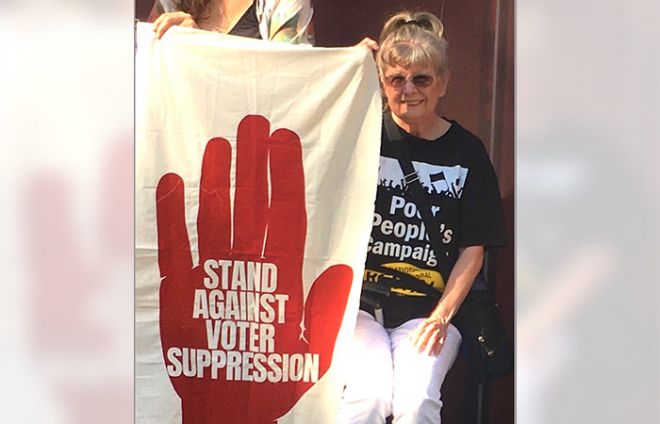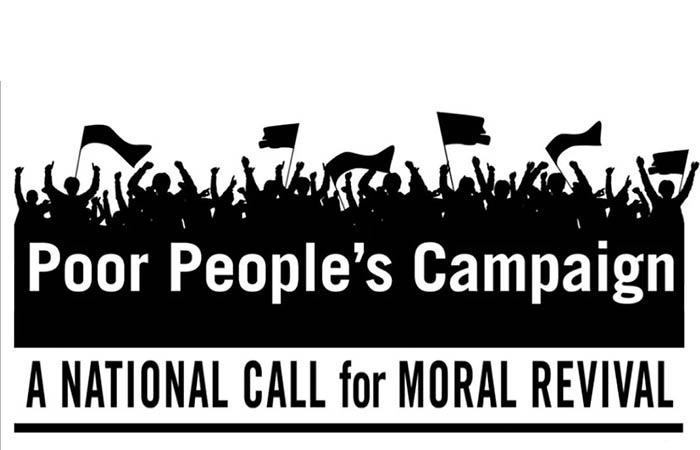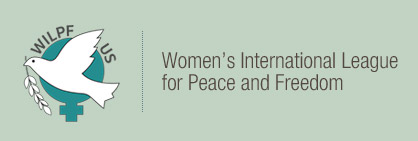Making Visible the Invisible: Poverty in the United States
Published on October, 55 2022
by Dorothy Van Soest
Lifelong WILPF member and former WILPF Liaison to the Poor People’s Campaign
November 2022
Making thinkers out of fighters and fighters out of thinkers.
— General Baker
“Isn’t it wonderful,” a Poor People’s Campaign activist friend of mine excitedly proclaimed on September 14, 2022, after reading that day’s New York Times article announcing that child poverty had plunged 59 percent from 1993 to 2019, from 28% (19.4 million children) to 11% (8.4 million children).
“How do we explain the discrepancy,” I said, “between that data and what our Poor People’s Campaign fact sheet says, that 52.1% of children under the age of 18 are poor or low-income (38.5 million children), and that more than half of our country’s children do not know if they will have a place to sleep, nutritious meals, and safe communities?” My friend looked stricken. “If I told people that, I think most of them would believe a New York Times article before they’d believe me,” she said.
Fortunately, the Poor People's Campaign: A National Call for Moral Revival has commissioned studies and issued reports that shine a light on the reality of what it means to live in poverty in the United States. My friend and I turned to the PPC report, The Souls of Poor Folk, for facts, figures, and the faces of those most impacted by systemic poverty, racism, and militarism. Here are some of the talking points we found that have informed our organizing efforts:
- Articles such as the one in The New York Times have value because they illustrate that “federal safety net” programs have proven effective in reducing poverty overall, which shows that poverty is not inevitable but rather a policy decision. They serve to confirm that when there’s a will, government can find enough money to help lift people out of poverty.
- When the woefully out of date federal poverty line is used, it does not accurately capture either the numbers or the conditions of people living in poverty. The most often used federal poverty line (FPL) is not grounded in the reality of what it takes to survive in today’s economy. For example, in 2016 the FPL quantified poverty for a single person younger than age 65 as having an annual income of $12,486 or less. For a single person above 65, it is $11,511, and for a household of two adults and two children it is $24,339. Using the FPL as the Official Poverty Measure (OPM), more than 95 million Americans (nearly 30 percent of the total population) are either in poverty or considered “low-income” (living below twice the poverty line).
- The Supplemental Poverty Measure (SPM), on the other hand, is a more accurate measure of poverty conditions since it takes into account federal assistance resources, such as refundable tax credits, as well as critical out-of-pocket expenses for food, clothing, housing, and utilities and it also takes into account geographic differences in costs of living. When the SPM is used, the number of poor people living in poverty rises to 140 million people (43.5 percent), which is the number the PPC uses.
- Sometimes the information, even when using the FPL, can be misleading in other ways. Compared to 1968, for example, today’s official poverty rate is virtually unchanged. And because our population has grown by more than 122 million people in these years, this means that there are 15 million more poor people today than there were 50 years ago. Further, “deep poverty,” defined as having income below half the federal poverty level, has risen from 3.7 percent in 1975 (earliest available) to 5.8 percent in 2016.
- Federal programs can and have worked well for poor families; e.g., the Supplemental Nutrition Assistance Program (SNAP), previously known as “food stamps,” the Earned Income Tax Credit (EITC); and the Child Tax Credit. Not only do such programs keep families out of poverty and increase food security, the benefits provided form a crucial foundation for better economic and physical health.
 Other empirically-based studies commissioned and reported on by the Poor People’s Campaign – such as the Poor People’s Pandemic Report, Poor People’s Moral Budget, Unleashing the Power of Poor and Low-Income Americans – similarly help us ground our organizing and activism efforts in critical thinking. They dispute the enduring narrative that poverty is the fault of the poor by demonstrating that what Dr. King called the “Triplets of Evil” – systemic racism, poverty, and the war economy and militarism – have deepened since 1968 due to structural and systemic reasons, rather than individual failures. They also dispute the myth that there is not enough for all of us to survive and thrive by making a clear case that the richest nation in the world has sufficient resources to ensure dignified lives for all its people. They show that the problem is a matter of priorities, as more and more of our wealth flows into the pockets of a small but powerful few and into our bloated Pentagon budget.
Other empirically-based studies commissioned and reported on by the Poor People’s Campaign – such as the Poor People’s Pandemic Report, Poor People’s Moral Budget, Unleashing the Power of Poor and Low-Income Americans – similarly help us ground our organizing and activism efforts in critical thinking. They dispute the enduring narrative that poverty is the fault of the poor by demonstrating that what Dr. King called the “Triplets of Evil” – systemic racism, poverty, and the war economy and militarism – have deepened since 1968 due to structural and systemic reasons, rather than individual failures. They also dispute the myth that there is not enough for all of us to survive and thrive by making a clear case that the richest nation in the world has sufficient resources to ensure dignified lives for all its people. They show that the problem is a matter of priorities, as more and more of our wealth flows into the pockets of a small but powerful few and into our bloated Pentagon budget.
As the Poor People’s Campaign and its reports continually remind us, the most pressing problems of our time must be tackled together and not separately. Attacks on voting rights are connected to attacks on basic needs like water, health care, and living wages. Our pursuit of wars abroad is connected to domestic problems, including the gutting of public services, the decline in government accountability, and the poisoning of our water and air. If we are to tackle all these interconnected problems and bring about change in our national priorities, we need to do so as both thinkers and fighters.



